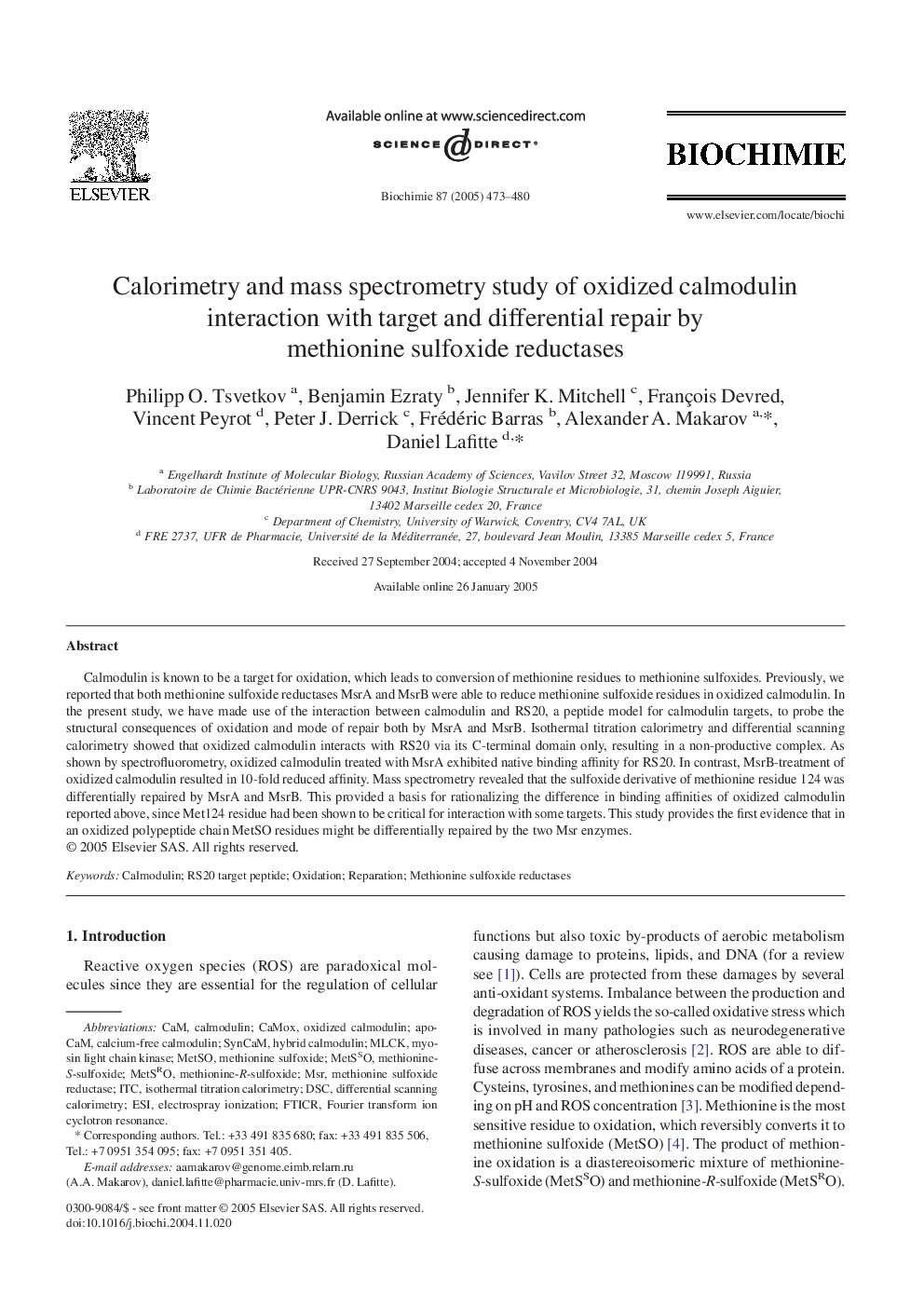| Article ID | Journal | Published Year | Pages | File Type |
|---|---|---|---|---|
| 10804582 | Biochimie | 2005 | 8 Pages |
Abstract
Calmodulin is known to be a target for oxidation, which leads to conversion of methionine residues to methionine sulfoxides. Previously, we reported that both methionine sulfoxide reductases MsrA and MsrB were able to reduce methionine sulfoxide residues in oxidized calmodulin. In the present study, we have made use of the interaction between calmodulin and RS20, a peptide model for calmodulin targets, to probe the structural consequences of oxidation and mode of repair both by MsrA and MsrB. Isothermal titration calorimetry and differential scanning calorimetry showed that oxidized calmodulin interacts with RS20 via its C-terminal domain only, resulting in a non-productive complex. As shown by spectrofluorometry, oxidized calmodulin treated with MsrA exhibited native binding affinity for RS20. In contrast, MsrB-treatment of oxidized calmodulin resulted in 10-fold reduced affinity. Mass spectrometry revealed that the sulfoxide derivative of methionine residue 124 was differentially repaired by MsrA and MsrB. This provided a basis for rationalizing the difference in binding affinities of oxidized calmodulin reported above, since Met124 residue had been shown to be critical for interaction with some targets. This study provides the first evidence that in an oxidized polypeptide chain MetSO residues might be differentially repaired by the two Msr enzymes.
Keywords
Related Topics
Life Sciences
Biochemistry, Genetics and Molecular Biology
Biochemistry
Authors
Philipp O. Tsvetkov, Benjamin Ezraty, Jennifer K. Mitchell, François Devred, Vincent Peyrot, Peter J. Derrick, Frédéric Barras, Alexander A. Makarov, Daniel Lafitte,
